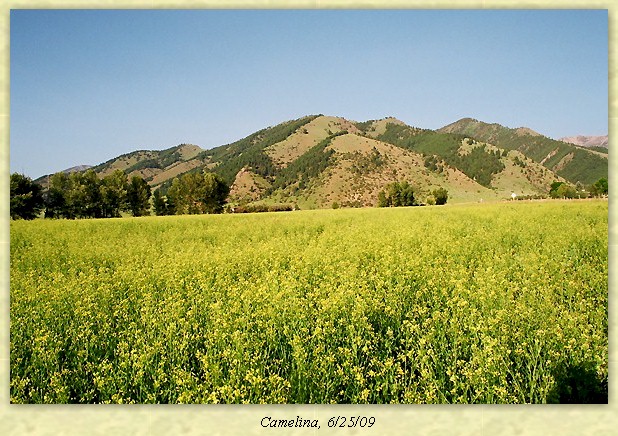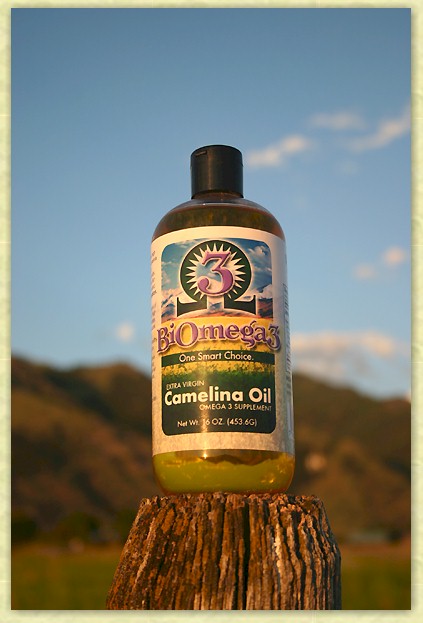
Camelina is an ancient oilseed crop, a member of the mustard family. It is extraordinarily high in Omega-3 essential fatty acids, as well as containing an optimal blend of Omega 3, 6, and 9’s.
Omega-3’s are sorely lacking in most people’s (not to mention animals!) diets. Sources are limited, the primary options being flax and fish oils.
Omega-3 dietary benefits are extensive and profound, ranging from improved cardiovascular health, reducing arthritic and inflammation problems, and facilitating healthy skin, joint, and brain function.
The significant advantage of camelina oil over flax or fish oil (not even considering it tastes way better!) is its chemical stability. Flax is notoriously unstable once it’s ground or pressed, and must be refrigerated and stored in dark bottles, and even then…
Camelina’s high vitamin E content has the incidental benefit of adding chemical stability, and our camelina oil does not require refrigeration, has an extremely long shelf life, not to mention we can show off its lovely golden color in clear bottles!

The oil we cold-press from camelina grown by ourselves and other Montana farmers contains an extremely beneficial blend of essential fatty acids. It also tests quite low in the less-healthy saturated fats. As you undoubtedly know, not all fats are bad, though. In fact some are “essential”!
Camelina tests remarkably high in the healthy monounsaturated and polyunsaturated fats. In fact ours tests about 18.5% in Oleic and even better than that, nearly 25% Linoleic, and up to (and occasionally a bit over!) 30% Linolenic fatty acids.
So it’s no wonder the health benefits of camelina are outstanding! Native to northern Europe, its benefits are long-known, in fact it’s been found in tombs back to the bronze age. Clearly it was well-regarded even then…
Historically used for lamp oil and skin use, the beneficial uses go far beyond that. Its properties as an Omega-3 supplement are outstanding, and a tablespoon a day will keep you lubed!
But you might as well get your supplements with dinner (or lunch or breakfast) as it lends itself to salad dressings, pestos, smoothies, and sundry other applications. Not so much as a frying oil, though. Has a very low flash point, great if you’re making biodiesel, but a bit touchy in the frying pan…
We’re the first to receive a manufacturing license in Montana for marketing camelina oil as a health supplement (as of July 2010) are expanding into healthy food retail outlets across the country, plus exploring marketing options in other countries as well, primarily China at the moment.
